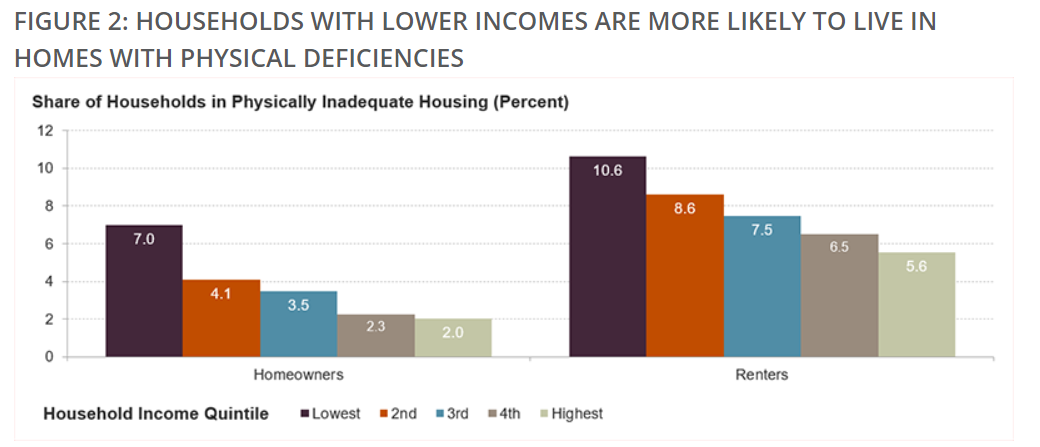 During an era of housing underproduction in the United States, many Americans who own a home, as well as those who lease or own a rental property, are living in places that are unsafe or otherwise substandard, according to the U.S. Census American Housing Survey.
During an era of housing underproduction in the United States, many Americans who own a home, as well as those who lease or own a rental property, are living in places that are unsafe or otherwise substandard, according to the U.S. Census American Housing Survey.
Pennsylvania is the first state to use funds from the American Rescue Plan Act (ARPA) to address the situation, potentially setting an example for other federal and local policymakers.
Experts from Harvard University’s Joint Center for Housing Studies say the deficient-housing situation—which is “persistent” and which disproportionately affects Black and Hispanic households—deserves further consideration and funding as part of the response to America’s housing shortage.
Physically deficient housing, in 2021, was a burden for 6.7 million American households, notes Research Analyst Sophia Wedeen, referring to the most recent American Housing Survey. That means 5.2% of Americans were living in homes with multiple structural deficiencies or lacking basic features such as electricity, plumbing, or heat.

The U.S. Department of Housing and Urban Development (HUD) established the concept of “physical adequacy” in the Fair Housing Act so that government agencies could evaluate housing units’ basic safety and suitability standards.
A substandard home, per HUD, has more than three significant structural problems such as water leaks, large open cracks, or holes in the floor. An electrical problem such as exposed electrical wiring, or lack of features such as hot and cold running water, a shower, a flush toilet, or electricity constitutes severely inadequate conditions.
Weeden says the situation shows no sign of recovery sans further action. “Despite improvements in building codes and construction standards, the number of U.S. households living in substandard homes has remained largely unchanged over the past 20 years,” she wrote.
In total (owners and renters), the number of households living in inadequate housing in 2021 increased by 206,000 since 2001.
These substandard living conditions unsurprisingly hurt lower earners the most.
In 2021, 7% of homeowners earning less than $24,000 per year lived in homes classified as moderately or severely inadequate, more than three times the share of homeowners with annual incomes of $129,000 or more.
The Census study showed that 5.7% of Black and 4.7% of Hispanic homeowners lived in moderately or severely inadequate homes, compared to 2.9% of white homeowners and 1.9% of Asian homeowners living in inadequate housing.

Addressing housing quality issues and remedying disparities in housing conditions will require greater public investment, the research analyst says, pointing to recent actions in Berks County, Pennsylvania, one of the first jurisdictions in the state to assist eligible households in need of basic home repairs using ARPA funding.
Pennsylvania’s Whole-Home Repairs Program is the first statewide initiative to subsidize home repair costs for lower-income homeowners and rental property owners, using $125 million in ARPA funding.
Pointing to a 2023 study by the Federal Reserve Bank of Philadelphia, which estimated the total cost of addressing physical deficiencies in the U.S. housing stock at $149.3 billion, Weeden says that with strategic government policy and funding, marked improvement is possible.
“While the investment needed to update the U.S. housing stock to meet contemporary home performance standards is significant, an investment to ensure basic safety and habitability is smaller in scale, and within the realm of achievable housing policy.”
The full analysis and both mentioned studies can be viewed at jchs.harvard.edu.

 theMReport.com Your trusted source for mortgage banking news
theMReport.com Your trusted source for mortgage banking news








